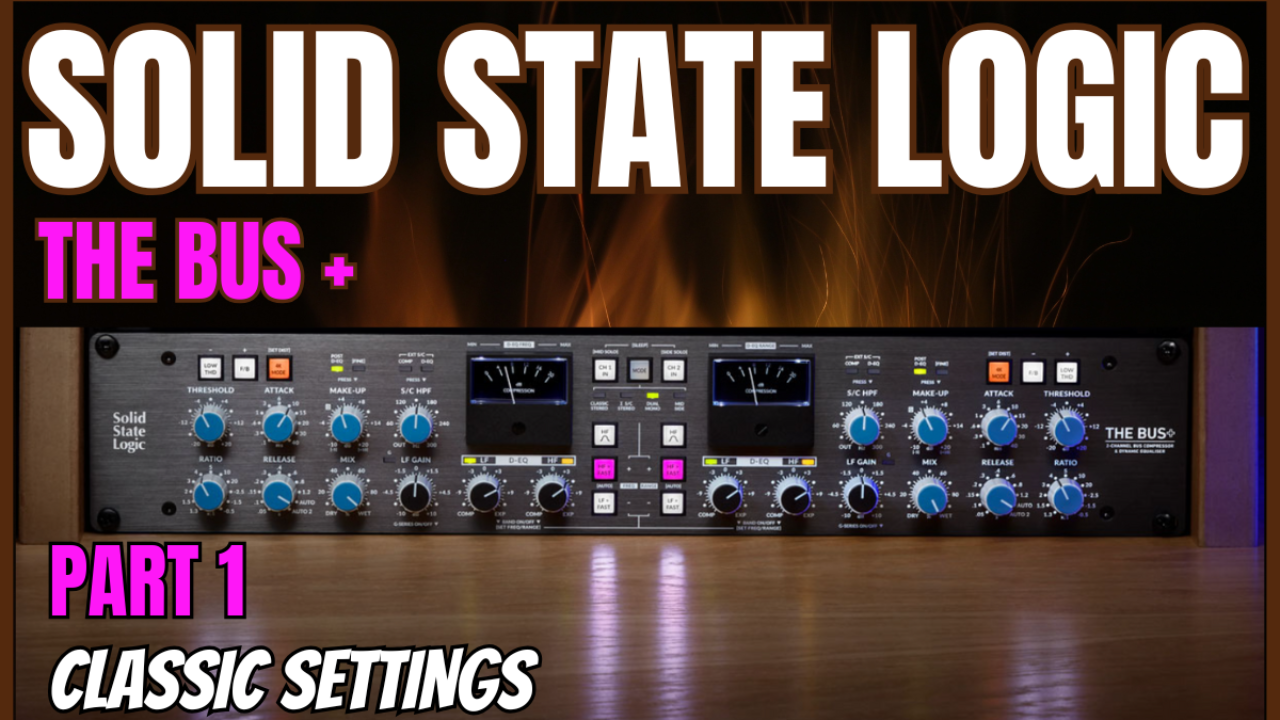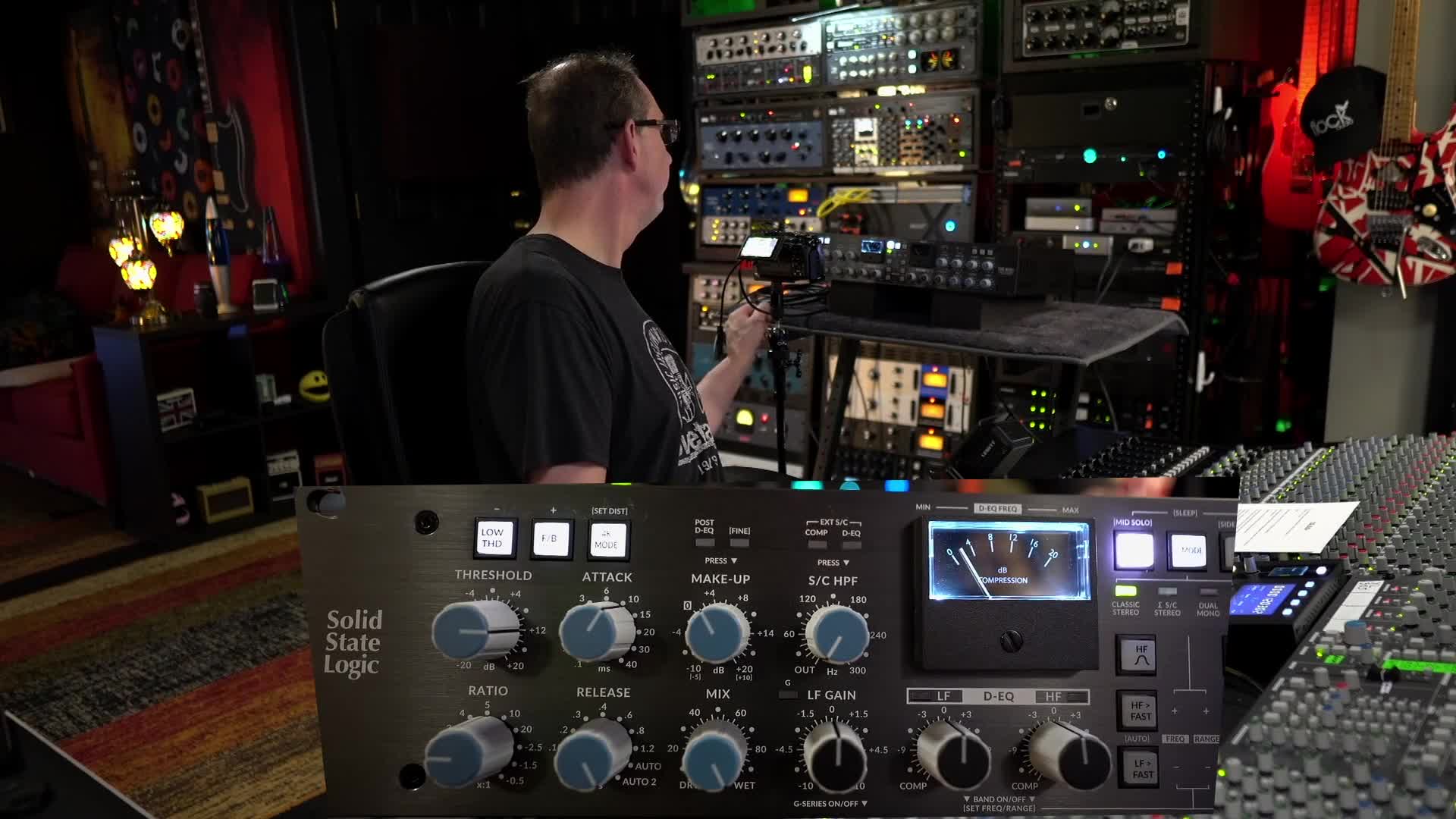Exploring the Solid State Logic Bus Plus: Part 1

Hey everyone, welcome back to the channel! Today, we embark on an exciting journey into the realm of analog gear with the Solid State Logic Bus Plus. This blog post marks the beginning of what will probably be a three or four-part series dedicated to exploring the capabilities of the SSL Bus Plus compressor. Whether you’re a musician aiming to get that perfect mix or an engineer looking to refine your craft in mastering, this series will dive deep into how this remarkable piece of gear can elevate your audio game.
Introduction to the SSL Bus Plus
The Solid State Logic Bus Plus is no ordinary compressor. It's a culmination of decades of experience, encapsulating the legendary SSL G Series bus compressor's heritage, known for its quintessential glue on master busses. This first post will introduce you to the unit, while in subsequent posts, we'll dissect each feature in detail, testing out its full capabilities and providing insights on how it can be integrated into your setups.
An Overview of the Video Series
In this series, we're taking a detailed approach to the SSL Bus Plus. Given the breadth of features and the intricate ways it can be used to manipulate audio, we're spacing out our examination over multiple videos. Today’s focus will be on the basic setup, akin to how I used to set up the traditional console compressor on my SSL Origin console.
This approach allows us to gradually build up complexity and understanding, ensuring you're not overwhelmed by its extensive feature set.
Join the Conversation
Before we dive deep, I urge you to become a part of this exploration. Share your thoughts and questions in the comments, and I'll try to address them in future posts and videos. Your feedback is invaluable as we navigate the rich terrain of the SSL Bus Plus together.
Let’s Talk Gear Transparency
Full disclosure is important. Solid State Logic kindly provided me this unit to review and demonstrate — I get to keep it. However, the opinions and insights shared are entirely my own, and I'm not being compensated financially for these videos.
Blockquote:
"I like to be 100% transparent. This thing is a killer piece of gear. It's awesome. You know I love SSL."
What is the SSL Bus Plus?
At first glance, the SSL Bus Plus might seem like a beefed-up version of the G Series compressor, but it's so much more. Built as a 500-unit, it amalgamates the core essence of its predecessors and adds a suite of new, innovative features. If you're familiar with the renowned SSL "glue," imagine having that capability multiplied with steroids.
Key Features Overview
-
Classic Sound with Modern Enhancements: Retaining the vintage charm of the 4000 series and later iterations, the Bus Plus expands beyond conventional boundaries.
-
Multiple Operating Modes: Operate it in classic stereo, dual mono, mid-side, and more.
-
Extended Compression Options: More attack and release modes, including two auto-release settings, a broader range of ratios, and even negative ratios for unique effects.
Exploring the Control Panel
Here's a quick walkthrough of the basic controls for today's exploration:
-
Threshold, Ratio, Attack, Release: Your standard compressor controls, allowing precise manipulation.
-
Mix Knob and Makeup Gain: For blending the dry signal with the compressed signal and adjusting levels post-compression.
-
Sidechain and Low Frequency Gain: Controls for shaping dynamics, with the low frequency gain being part of a dynamic EQ we’ll cover later.
The Bus Plus offers more variation in terms of attack and release times compared to regular bus compressors, providing enhanced flexibility. This versatility allows for more precise sound sculpting, a boon for engineers looking for specific audio characteristics.
Listening and Adjusting
Let's set up the Bus Plus with settings akin to those I'd typically use on my console compressor. Here’s how I have it dialed in for a funk track:
-
Attack: 10ms
-
Release: Auto
-
Ratio: 2:1
-
Side Chain: Initially dialed out, set to 60Hz for demonstration
By engaging these settings, we achieve around 4 decibels of compression, exemplifying the subtle yet impactful bus compression known as the SSL glue.
Listen and Compare:
Switch between processed and unprocessed audio to hear the transformation. Notice how the compression tightens the mix, giving the snare more presence and cohesion across the sound spectrum.
Special Features: Unleashing the Extra Flavors
Beyond the standard controls, the Bus Plus harbors unique features that enrich its sonic palette — these are the highlights in today’s walkthrough:
-
Low THD Mode: Reduces low-end distortion, adding thickness ideal for bass-heavy genres.
-
Feedback Mode: Offers a more relaxed compression feel by feeding the VCA's post-audio signal into the sidechain.
-
4K Mode: Enhances harmonic distortion, replicating the vintage warmth of the 4000 series consoles.
Low THD: Play it Smooth
Engage the Low THD button to experience how it enhances the depth of your low frequencies. An excellent tool for electronic and dance music, where a tight, low-end groove is essential.
Taming Compression with Feedback Mode
Toggle the Feedback Mode to feel the difference in compression aggression. Be mindful of its visual representation on the meter as it affects gain reduction. Depending on your material, this can add a tasteful variance in texture.
Rediscovering Vintage Sound with 4K Mode
The 4K Mode is your gateway to increased harmonic richness. Adjust the saturation levels for just the right amount of edge and warmth. Discover how different levels of saturation affect your mix's dynamics, introducing a characteristic crunch, especially noticeable on percussive elements like snare drums.
Testing Saturation:
-
Initial Tweaks: Explore the steps of saturation from subtle to pronounced.
-
Application: Engage the 4K mode to introduce a desirable crunch, bringing energy to your mix without overpowering natural nuances.
Wrapping Up Part 1
In today’s exploration of the SSL Bus Plus, we’ve only scratched the surface of its potential. We've looked at basic settings akin to the classic SSL compressor while touching on enhancements that this unit uniquely offers. Remember, these features — especially the Low THD, Feedback, and 4K modes — set the Bus Plus above its traditional counterparts, providing extra creative tools for your sonic toolkit.
What’s Coming Next?
In the next parts of this series, we’ll continue diving into more advanced functionalities, such as utilizing different modes, gaining full mastery over attack and release variations, and exploring its strength in parallel compression on drums. Make sure to like, subscribe, and stay tuned to receive updates on when these deep dives will be available.
Your thoughts and experiences are invaluable. If you have the Bus Plus or are considering it, let me know how you're using it or what you'd like to learn in upcoming posts. By the end of this series, you'll have a rich understanding to harness this potentiated compressor, demystifying any initial intimidation it might present.
Thank you for watching and reading. I'm thrilled to continue this journey with you!
Stay tuned for more insights into the world of mixing and mastering with SSL's Bus Plus. Until next time, I've been Dave with Mixing Music Analog.




